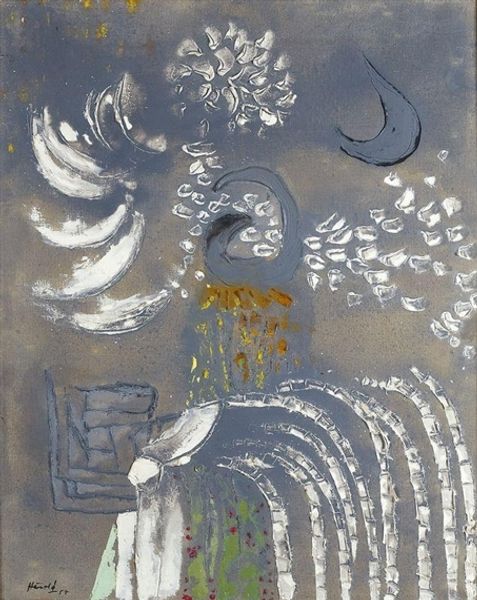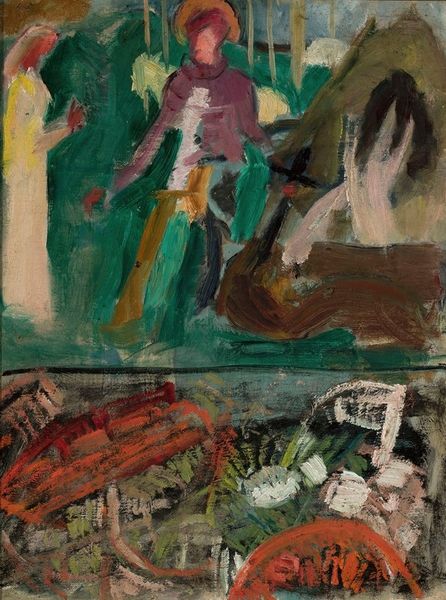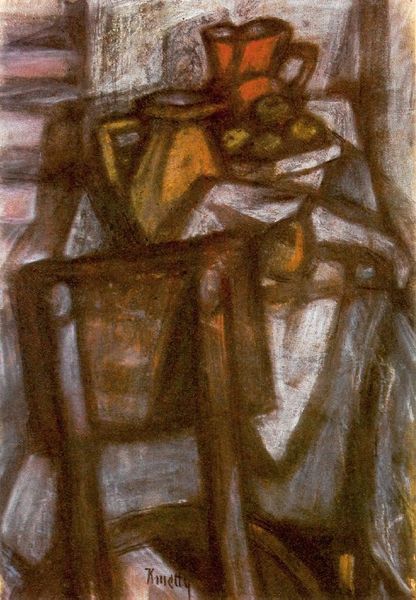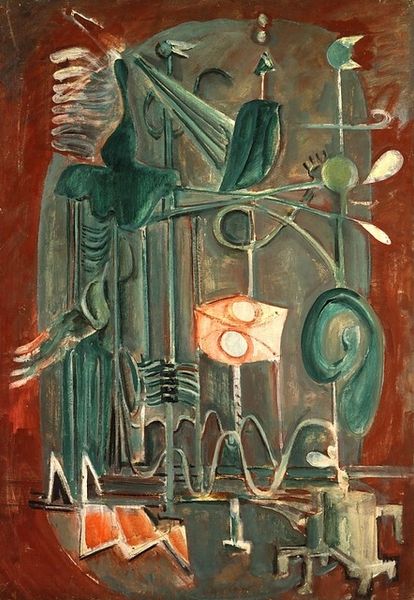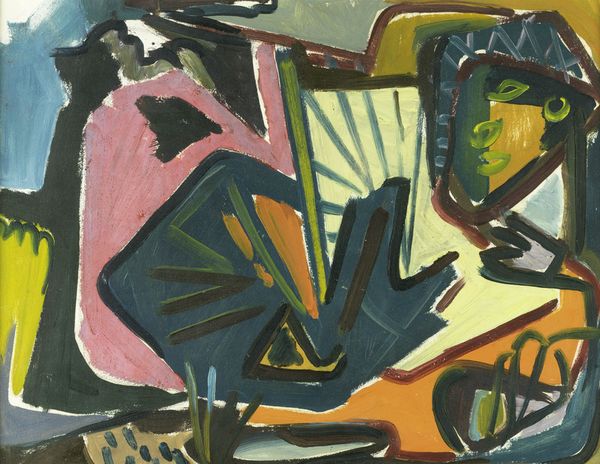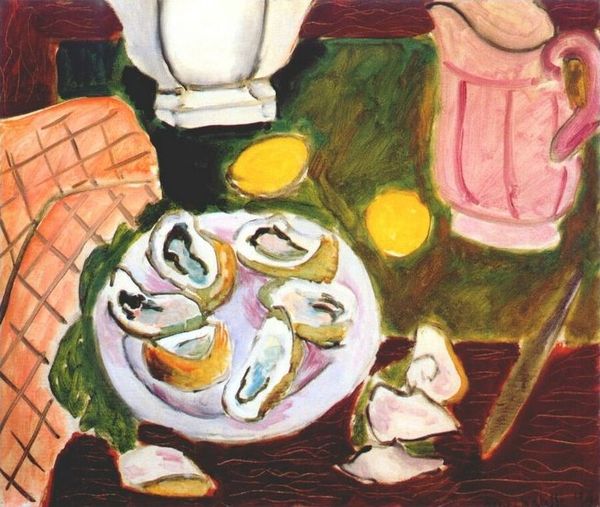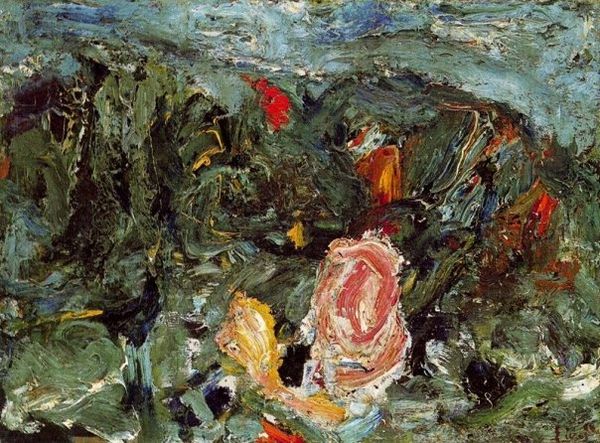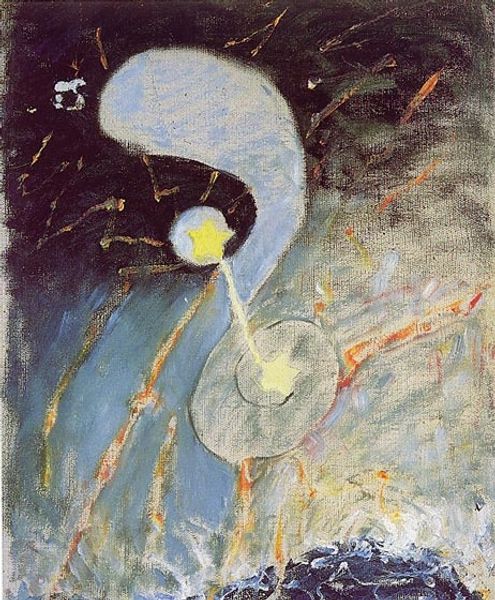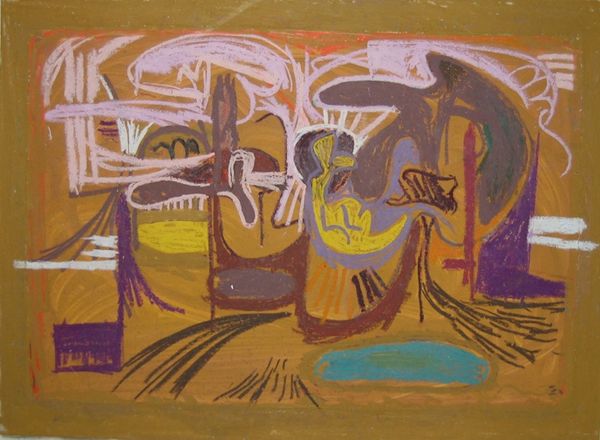
#
acrylic
#
abstract painting
#
painted
#
possibly oil pastel
#
fluid art
#
acrylic on canvas
#
underpainting
#
paint stroke
#
painting painterly
#
swirly brushstroke
Copyright: Istvan Ilosvai Varga,Fair Use
Editor: We’re looking at Istvan Ilosvai Varga’s "Still-life Composition" from 1948. The painting style strikes me as kind of gloomy, especially with the muted color palette and those undefined forms. What stands out to you about this piece? Curator: It’s interesting that you perceive a sense of gloom. Consider the postwar context. Still life, historically a display of prosperity and order, is now rendered in uncertain shapes and shadowy tones. Does this not signal a cultural anxiety, a questioning of established values through the reinterpretation of familiar symbols? Editor: So the distorted objects and colors could reflect the unease of the time? The apples, for instance—are they symbols of something specific? Curator: Apples in art have a rich and complex history, referencing knowledge, temptation, abundance. However, here, they appear almost bruised, losing their symbolic weight perhaps? Varga uses them to evoke a disrupted memory of simpler times. Are they appetizing, reassuring? Editor: I see what you mean. They seem more like stand-ins for real fruit, devoid of that sense of abundance you mentioned. And what about the book – does that hold any symbolic meaning? Curator: The book, usually an emblem of learning and tradition, is now fragmented. Is it being questioned? Remember the book burnings in Europe during the war; does the treatment of the book recall similar acts? It also makes me wonder about what other cultural references Varga incorporated, given the cultural context. Editor: It’s amazing how much the atmosphere and deeper significance can be conveyed through familiar objects presented in a slightly unsettling way. I see so much more in this than just a standard still life now. Curator: Indeed, it’s a visual reminder that objects and images can be cultural touchstones that evoke collective memory and even signal transformations across time.
Comments
No comments
Be the first to comment and join the conversation on the ultimate creative platform.
